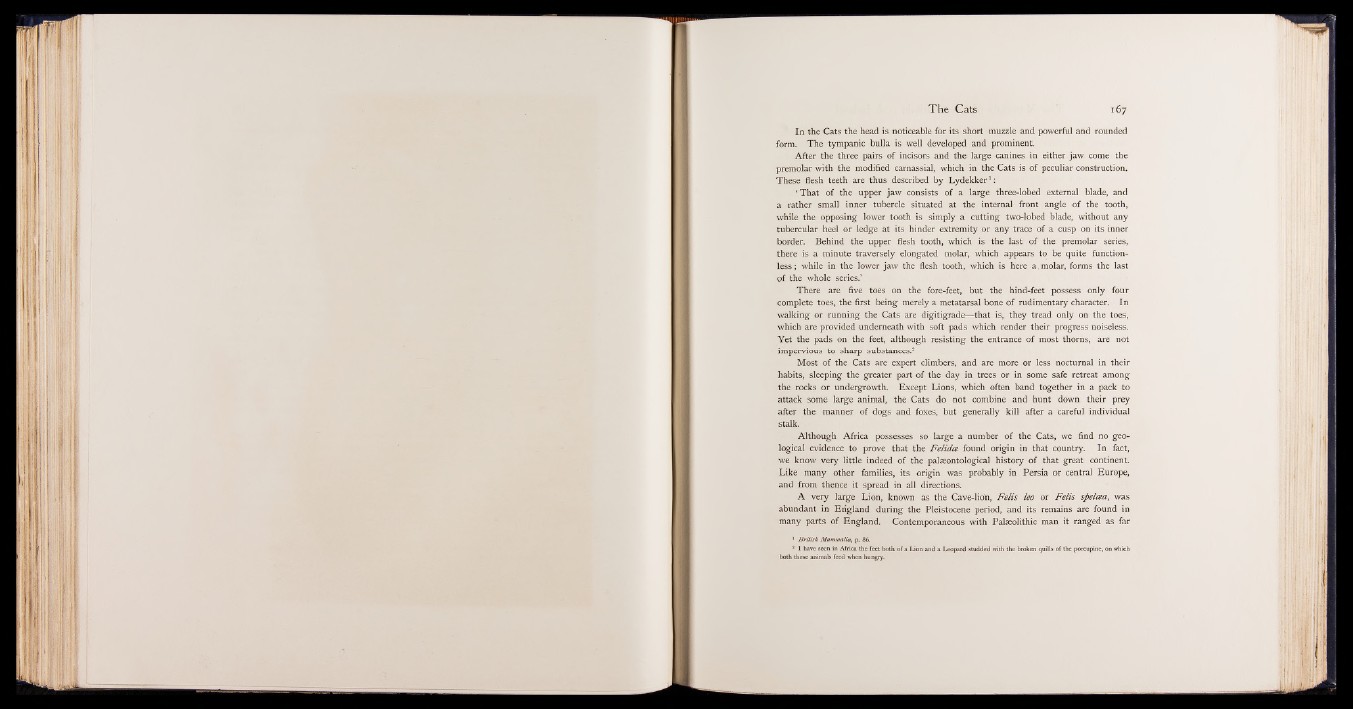
In the Cats the head is noticeable for its short muzzle and powerful and rounded
form. The tympanic bulla is well developed and prominent.
After the three pairs of incisors and the large canines in either jaw come the
premolar with the modified carnassial, which in the Cats is of peculiar construction.
These flesh teeth are thus described by Lydekker1:
‘ That of the upper jaw consists of a large three-lobed external blade, and
a rather small inner tubercle situated at the internal front angle of the tooth,
while the opposing lower tooth is simply a cutting two-lobed blade, without any
tubercular heel or ledge at its hinder extremity or any trace of a cusp on its inner
border. Behind the upper flesh tooth, which is the last of the premolar series,
there is a minute traversely elongated molar, which appears to be quite function-
less ; while in the lower jaw the flesh tooth, which is here a . molar, forms the last
pf the whole series.’
There are five toes on the fore-feet, but the hind-feet possess only four
complete toes, the first being merely a metatarsal bone of rudimentary character. In
walking or running the Cats are digitigrade— that is, they tread only on the toes,
which are provided underneath with soft pads which render their progress noiseless.
Yet the pads on the feet, although resisting the entrance of most thorns, are not
impervious to sharp substances.2
Most of the Cats are expert climbers, and are more or less nocturnal in their
habits, sleeping the greater part of the day in trees or in some safe retreat among
the rocks or undergrowth. Except Lions, which often band together in a pack to
attack some large animal, the Cats do not combine and hunt down their prey
after the manner of dogs and foxes, but generally kill after a careful individual
stalk.
Although Africa possesses so large a number of the Cats, we find no geological
evidence to prove that the Felicia found origin in that country. In fact,
we know very little indeed of the palaeontological history of that great continent.
Like many other families, its origin was probably in Persia or central Europe,
and from thence it spread in all directions.
A very large Lion, known as the Cave-lion, F elis leo or Felts spelcea, was
abundant in England during the Pleistocene period, and its remains are found in
many parts of England. Contemporaneous with Palaeolithic man it ranged as far
1 British Mammalia, p. 86.
* I have seen in Africa the feet both of a Lion and a Leopard studded with the broken quills of the porcupine, on which
both these animals feed when hungry.